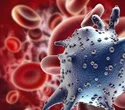Deep-sea bacterial compound triggers pyroptosis to fight cancer
The compound, called EPS3.9, consists of mannose and glucose and is produced by the Spongiibacter nanhainus CSC3.9 bacterial strain and other members of the genus Spongiibacter. Mechanistic analyses showed that EPS3.9 can directly target 5 membrane phospholipid molecules and exert tumor toxicity by stimulating pyroptosis in human leukemia cells. EPS3.9 also had significant anti-tumor effects in the mice with liver cancer and activated anti-tumor immune responses.
#ResearchChemistry, #ChemicalInnovation, #Science, #ScienceResearch, #ScientificResearch, #ResearchAndDevelopment, #ChemistryEducation, #ChemistryExperiments, #ChemistryLab, #ChemistryStudents, #ChemistryStudy, #OrganicChemistry, #InorganicChemistry, #PhysicalChemistry, #AnalyticalChemistry, #Biochemistry, #MaterialsChemistry, #TheoreticalChemistry, #AppliedChemistry, #MedicinalChemistry
Visit Our Website : researchchemistry.org
Nomination Link : researchchemistry.org/award-nomination/
Registration Link : researchchemistry.org/award-registration/
Member Link : researchchemistry.org/member-submission/
Contact Us: contact@researchchemistry.org
Social Media Links
Instagram : www.instagram.com/chemistryaward
Twitter : x.com/Chemistryaward
Pinterest : in.pinterest.com/chemistrymails




Comments
Post a Comment